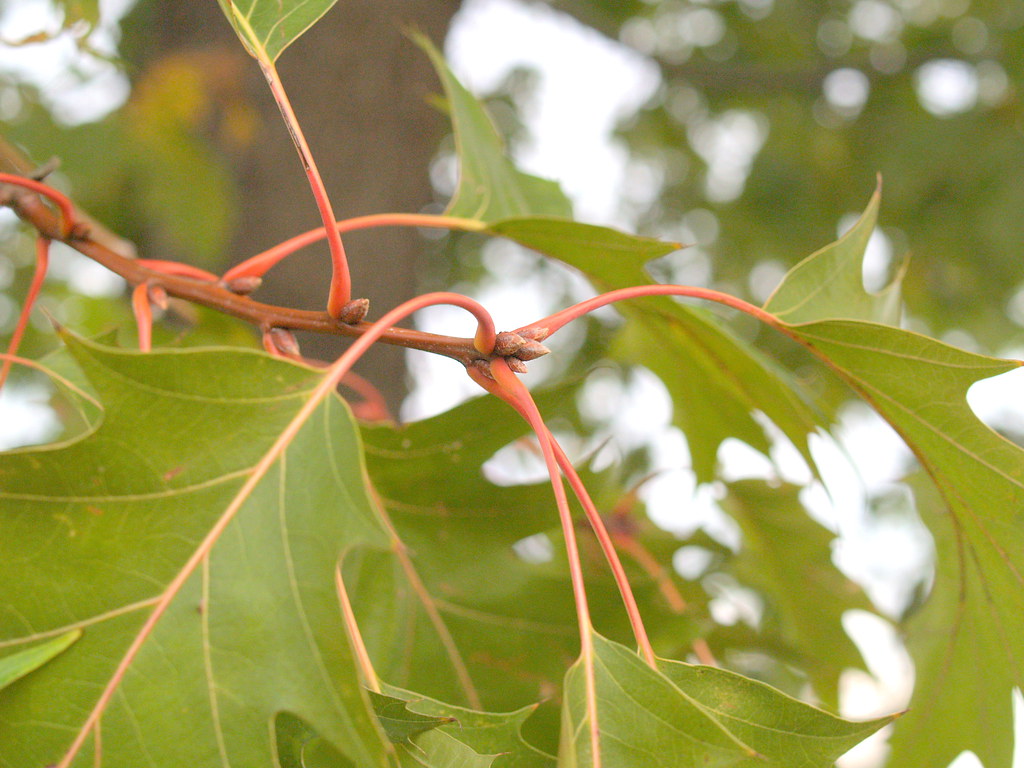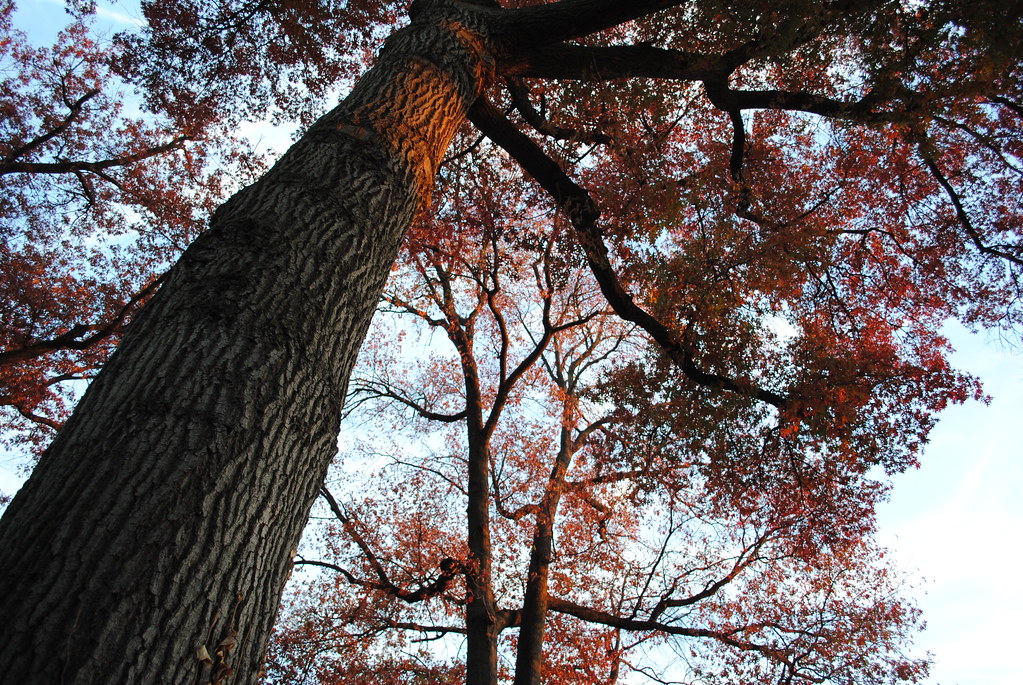Cue the northern red oak (Quercus rubra), our Tree of the Month for June. With dense leaf coverage and a typical height of almost 100 feet, the Northern red oak is one of the best shade trees D.C. has to offer on scorching afternoons.
 |
| Photo credit: Nigel Cox. |
The northern red oak is native to the northeast region of the United States and southeast Canada. You can recognize the tree by its distinctive bark, leaves, and acorns. Mature trees have dark grey or brown bark with broad, shiny strips on the trunk’s ridges. Its leaves are lustrous dark green on both sides, with seven to eleven sharp lobes. The tree’s acorns are typically two to three centimeters long and have a reddish-brown cup on one end. Unlike the white oak, a red oak’s acorns stay on the tree through the winter.
 |
| Pointy lobes and brownish-red stems and twigs of a northern red oak. Photo credit: Maggie. |
Red oak seedlings need to be planted in open areas, as they require a light intensity of about 30 percent to grow. Small sprouted trees should be given a planting space of at least 8.5 square meters. If you are interested in planting a northern red oak tree, don’t forget about our Tree Rebate Program! The red oak qualifies as one of our rebate program’s large shade trees likely to thrive in the District. You can find red oaks in a lot of places in D.C. including: McPherson Square, Cleveland Park, Dumbarton Oaks, Logan Circle and Woodland-Normanstone.
Northern red oak facts:
- Northern red oaks can thrive in forests and cities, as long as they have enough space.
- They have a fast growth rate of about 2 feet per year.
- Northern red oaks’ acorns are a treat for many animals, including ruffed grouse, blue jays, wild turkeys, fox squirrels, bears, deer, and raccoons.
- On rare occasions, the red oak can live to be 500 years old! More commonly, they tend to stay healthy for about 150 years.
 |
| Red oak in November in Mount Pleasant. |

No comments:
Post a Comment